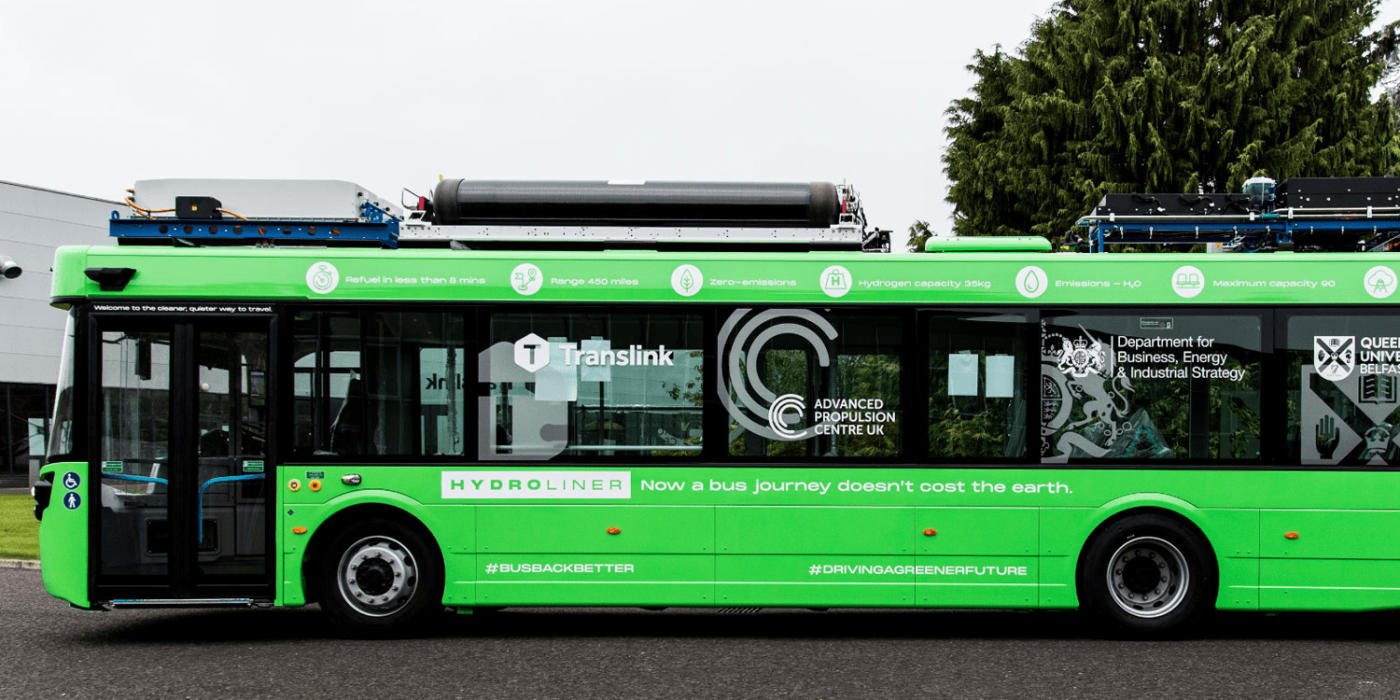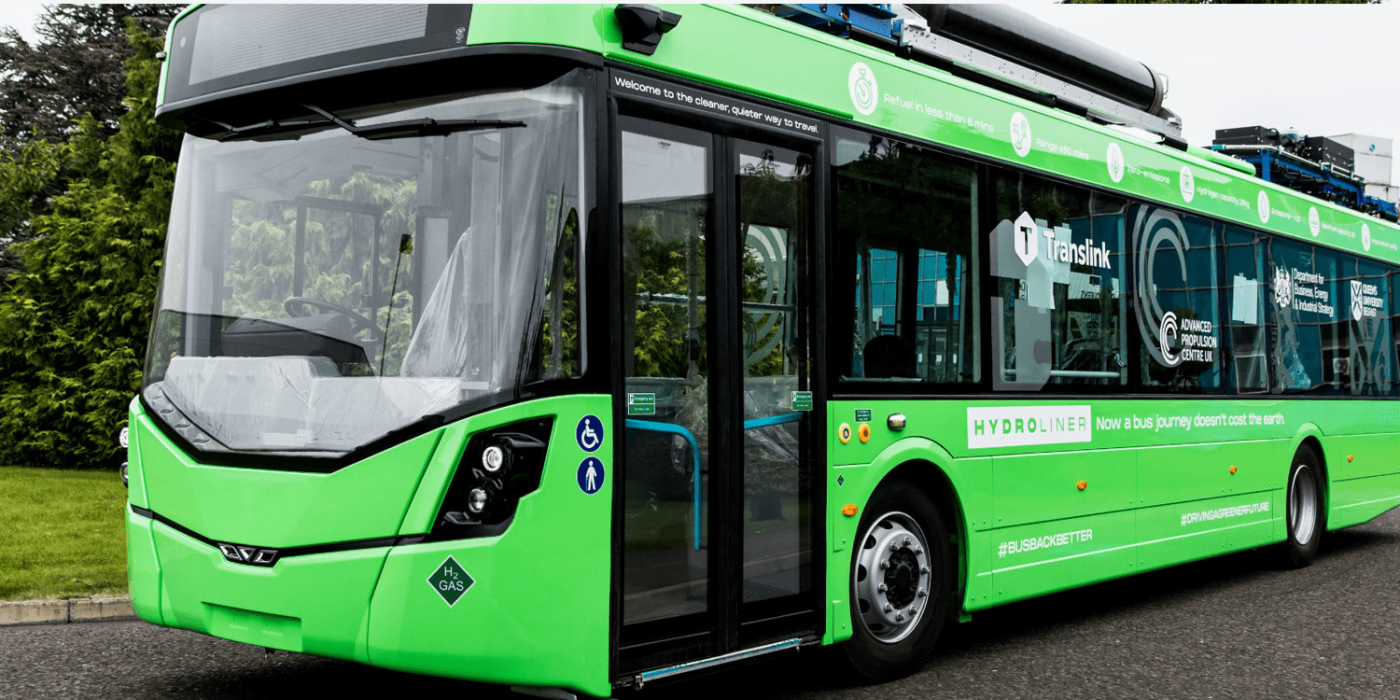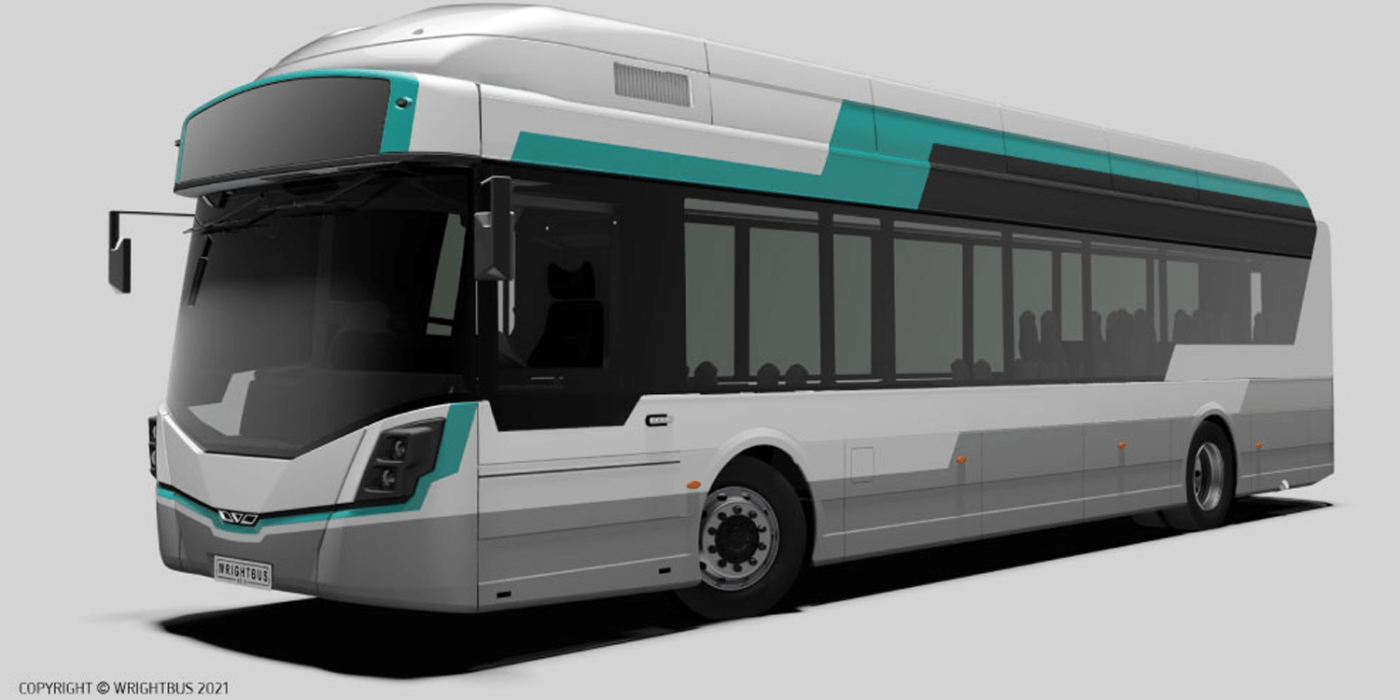Wrightbus presents electric & fuel cell single-decker buses
The Northern Irish bus manufacturer Wrightbus is introducing a new single-deck bus with battery and fuel cell propulsion. The new models of the GB Kite series in the Hydroliner FCEV and Electroliner BEV variants can each accommodate up to 90 passengers and are scheduled to go into series production in 2022.
The new duo increases Wrightbus’ selection to now four zero-emission buses. The single-deckers join the existing double-decker models StreetDeck Hydroliner with FC drive and StreetDeck Electroline with BEV drive. The latter was only introduced in July. Among the four bus models, the Northern Irish want to leverage considerable synergy potential – especially through common parts. According to the manufacturer, both new single-deck buses will have 86% of the parts in common with their double-deck sisters.
In this respect, many of the technical data seem familiar. First of all, the GB Kite Electroliner BEV: The solo bus can be equipped with lithium-ion batteries with an energy content of 340 kWh, 454 kWh or 567 kWh and is supposed to travel up to 300 miles (about 483 kilometres) with the largest battery pack. We already know the two smaller battery options from the BEV double-decker. Wrightbus specifies the DC charging power at 150 kW, optional opportunity charging via pantograph at 450 kW. The charging process via cable should take 2.5 hours for the smallest battery, three hours for the 454 kWh variant and 3.5 hours for the largest battery.



Analogous to the BEV double-decker, the GB Kite Electroliner BEV also has a rear-wheel suspension system from ZF (AV133) and an independent suspension, also from ZF, as the front axle (RL 82 EC). Buyers also have the choice of one or two doors.
The fuel cell solo bus model is very similar in design. Instead of the pure BEV drive, the GB Kite Hydroliner FCEV has a Ballard FCmove fuel cell with 70 kW or 100 kW and a small supplementary battery with 30 or 45 kWh on board. In addition, hydrogen tanks with a storage volume of 35 or 50 kilograms. In the most powerful version, the FCmove bus is expected to travel 650 miles, or about 1,050 kilometres. The maximum number of passengers, axle systems and door options are again identical to the BEV counterpart.
Wrightbus says both new models will enter production in the first quarter of 2022 and their development has benefited significantly from the UK’s Advanced Route to Market Demonstrator (ARMD) programme the Advanced Propulsion Centre. “The funding from the ARMD competition has been invaluable in enabling us to develop the technology for our two new zero-emission monoplanes at a remarkable pace,” highlights Jo Bamford, Wrightbus chief executive.
Incidentally, Forsee Power is acting as the supplier of the batteries for the BEV buses. The Bamford Group, new parent of Wrightbus, had extended the partnership with the French battery manufacturer in October 2020 with a new contract for several hundred battery systems per year. Forsee Power announced the introduction of extra-thin battery modules earlier this year and directly named Wrightbus as the launch customer for the modules of the new Slim series. Whether these batteries are now already being installed in the two Electroliners is not specified. However, the high storage capacity of the 567-kWh top battery leads us to assume this, at least for the solo bus model.
wrightbus.com, wrightbus.com (GB Kite Hydroliner FCEV), wrightbus.com (GB Kite Electroliner BEV)




0 Comments